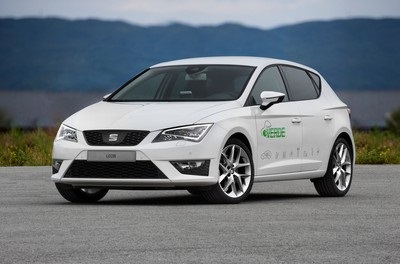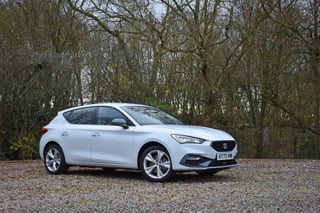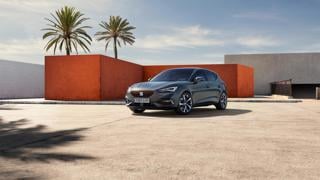Seat has showcased a brand new plug-in hybrid prototype based on the new Leon, at the official closing event of the pioneering Cenit Verde research project that produced it.
Called the Leon Verde, the prototype is the culmination of a four-year research project designed to facilitate the market introduction of an electric vehicle in Spain.
Powered by a 1.4-litre TSI petrol engine with 122 PS linked to a 102 PS electric motor, for a combined maximum output of 170 PS, the Leon Verde's electric-only driving range on a full charge is 31 miles. With a full battery and its 40-litre petrol tank full, its total range is 507 miles.
That equates to a combined fuel consumption figure of 176.6 mpg and CO2 emissions of 36 g/km.
In keeping with its futuristic theme, the Leon Verde is equipped with an advanced Human-Machine Interface (HMI) integrated into a smartphone app. This enables the driver to connect to the car via a wireless network with his or her smartphone to manage functions such as energy consumption, battery status, recharge management and estimated CO2 savings in electric mode.
In addition, the project has enabled development of a Driving Cycle Predictor, which analyses and memorises the routines and driving style of the driver, using this information to optimise energy consumption and reduce CO2 emissions.
The holistic approach to electric vehicle development undertaken by the Cenit Verde project resulted not only in an entirely new electric vehicle, but an entirely new approach to charging infrastructure as well.
In collaboration with companies including Cobra, Endesa, Iberdrola and Red Eléctrica Espana, a ground-breaking system of tariff negotiation and smart energy management has been developed, which effectively allows the car to ‘interact' with the electricity grid - reducing pressure on the grid and, ultimately, saving the user money.
The system detects when overall energy consumption is low on the grid, and incentivises, by way of lower costs, charging during these times. If the car is left plugged into a power source between 7pm and 7am, for example, the system will only charge the car at times when it detects the overall demand has dropped, using a recharge manager.
The user can specify whether he or she wishes the system to work this way, paying less for energy consumed when demand is low. Alternatively, a standard quick charge function is also available.
But the Leon Verde is a car that gives to the grid as well as taking from it - via a Lear 20 kW on-board charger, the Leon Verde allows for two-way connection to the grid, allowing it to feed in electricity.
Ramón Paredes, vice-president for governmental and institutional affairs for Seat and the Volkswagen Group in Spain, described the project as "the most ambitious research programme carried out by a consortium of Spanish companies in such an important technological sphere as electro-mobility."
He said: "Funds devoted to the financing of R&D activities constitute key elements in the industrial policy of any developed country, or at least if it wishes to continue being one. Experience tells us that those countries who have been able to go against the flow have managed to emerge from the crisis more rapidly and in better shape."
Seat showcases Leon Verde plug-in electric prototype
- By Fleet News
- |
- 13 June 2013
- News


















Login to comment
Comments
No comments have been made yet.